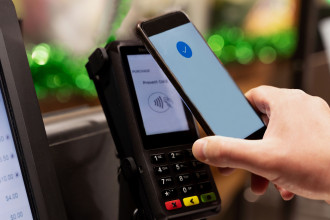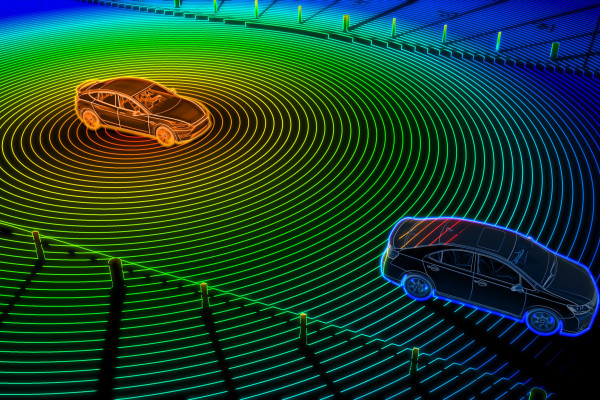Automotive – private passenger transport
The autonomous vehicle is completely guided by the system from start to finish, and the "driver" is more of a passenger. This is how it should be in the future: autonomous driving at level five. Here, a driver no longer even must be present. In the levels before that, drivers still have the task of monitoring the journey and intervening if necessary.
If the driver no longer has a driving task, it is not the owner of the car who is liable in the event of an accident, but the manufacturer. Since 2021, there has been a law allowing fully autonomous vehicles to participate in road traffic in Germany. However, there is yet no precise legal framework for this.
Trains – public passenger transport by rail
The goal of the French railroad company SNCF is to send fully autonomous trains onto the rails for passenger and freight transport as early as 2023. But initially only as a prototype. Two years later, industrialization is to begin. Autonomous commuter trains and subways, on the other hand, have been in operation on closed rail systems in many major European cities since the 1980s. The important thing here is automatic train control, which calculates and maintains speeds and distances to other trains. The advantages of driverless rail transport are greater flexibility, e.g., in the event of increased passenger volumes: there is no longer a need to wait for driving personnel. In addition, autonomous rail is more punctual and less prone to breakdowns and disruptions. Therefore, the deployment is being worked on, although there is no talk of a plan in Germany, as in France.
Taxis and busses – (public) passenger transport by road
Robocab providers advertise with the promise of less traffic on the roads, but whether they can keep this promise is debatable, since they take people away from public transport. Robocabs would not replace the bus ride, but the car ride or the walk. We are still some ways away from self-driving cars transporting passengers, as is the case in San Francisco, for example.
The situation is different in the field of self-driving buses, where DB is one of the testing parties. In Bad Birnbach in Bavaria, for example, Germany's first autonomous bus line is in operation. An attendant, not a driver, could intervene in the journey of the electric bus if necessary. In other autonomous buses, not even that is necessary.
In 2035, 180,000 bus shuttles are expected to be needed in German cities as the demand for mobility within cities increases.

Trucks – transport of goods
As the amount of freight moved across German highways everyday increases, more truck trips are necessary. Plans call for greater coverage with autonomously driving vehicles in this area as well. Several aspects are of equal advantage: on the one hand, work accidents, for example after long driving times, can be avoided through monitoring by cameras and sensors, as they are carried out automatically. On the other hand, fuel can be saved through platooning. For this, several networked trucks drive behind each other at a short distance, each in the slipstream of the truck in front. Only the first truck needs an active driver.
Alternatively, Volvo, for example, is experimenting with an autonomous electric vehicle that resembles a flat airport vehicle and onto which the containers can be placed and thus moved.
Nevertheless, it is not possible to look to the (near) future with expectation, as only 20 percent of trucks are expected to be driving autonomously by 2030.
Deliveries – transport of goods
In the area of services and deliveries, the potential for this is all the greater: 4.5 billion packages are delivered in Germany every year. Package suppliers are therefore under high time pressure. Autonomously driving delivery vehicles with an intelligent delivery system would make sense here. In this way, an efficient delivery sequence can be found, the recipient can track the package via an app, and the delivery person is no longer needed in his role as driver. At the right address, he can get out and drop off the package while the vehicle searches for a suitable stopping point on its own.
Alternatively, smaller shipments can be delivered by drone. While the number of packages that would have to be transported through the air each day could be problematic, emergency delivery could be ensured in this way, especially in less densely populated areas. It is anticipated that the market volume of autonomous last-mile delivery, i.e., from parcel center to recipient, will be four times larger in 2027 than in 2020.
To conclude
Autonomous vehicles can be a crucial step toward sustainable and liveable cities. To do so, they must be used properly, which requires their use in local public transport.
Germans are not yet one hundred percent convinced of the new developments on the road. But they still have a little time to get used to it, because autonomous vehicles are supposed to have become established by 2040.
Quickscout
Looking for suitable
technology providers?
Start scouting!







